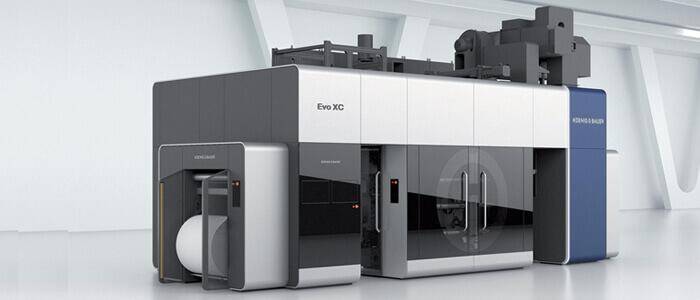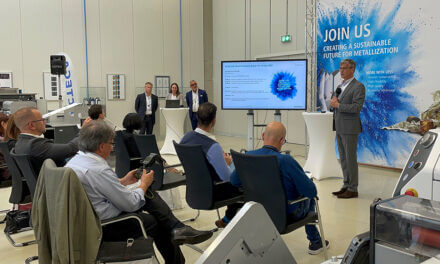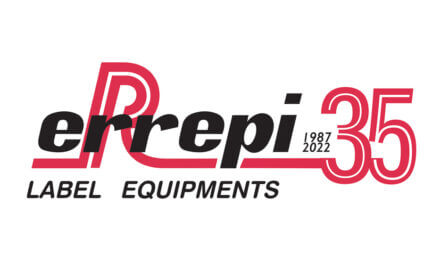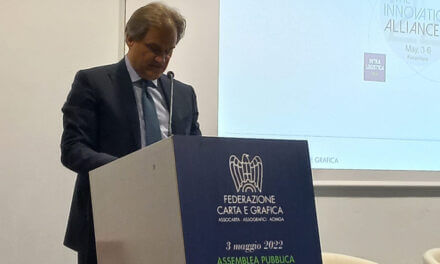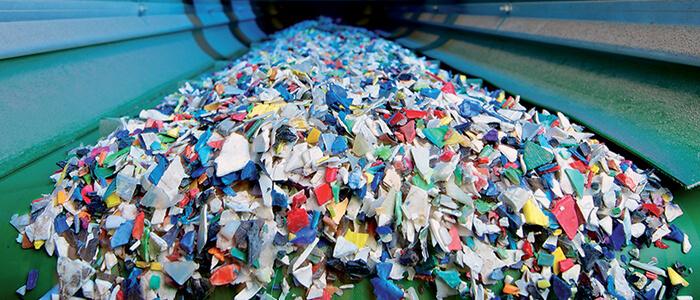Customer requests are often confused, due to the complexity – really difficult to master – of the factors involved, but also due to measures such as the tax on plastic, based on the assumption that this material can be done without tout court, which is hardly a case in point. Overall, however, the market expresses a clear need: it must be able to produce and print packaging that is both functional (in terms of shelf life, protection, etc.) and sustainable. And Koenig & Bauer Flexotecnica offers many responses, for example the management of water-based technologies. Thus begins Andrea Dallavalle, Sales Director Europe Middle East & Africa at Koenig & Bauer Flexotecnica, to whom we asked what the state of the art of the Italian-German company is in terms of sustainability.
Why did you start from water-based inks? Are they that important for the sustainability of the printing process?
Yes indeed, the environmental benefits of this technology are significant, both during disposal and during printing because they do not emit harmful volatile elements into the atmosphere. In Italy, in particular, the legislation on VOCs is very strict and the controls made by ARPA (the Regional Agency for the Protection of the Environment, Ed.) are so stringent as impose, when using solvent-based inks, costly treatment and abatement systems.
Certainly the possibility to eliminate the problem at the origin working with water-based products, is a very interesting aspect for converters. The advantages also concern workers’ health, reduction of explosion risks, the requirements demanded for the storage and transport of solvents and, of course, subsequent disposal. And they are so important that they are encouraging an increasing number of operators to adopt them, despite the higher cost of the products and the difficulties in sharing the same with the brand owners.
Has K&B Flexotecnica developed specific machines for water-based printing?
We have done better: since the last drupa all our machines are combined technology, to allow the choice of the ink to be used to suit the occasion and without any additional cost. In fact, not all processes, subsequent to printing are compatible with water-based inks: Laminating yes but this is not the case for pasteurisation for example. Even when it comes to printing substrates, not all of them have sufficient surface tension to enable high performance water-based printing. For example, materials with low surface tension (less than 40÷42 dyne/cm) and poorly reactive even to corona treatment, at the moment do not enable speeds compatible with minimum productivity targets to be reached. The converter, therefore, must be able to choose and for this reason we have optimized our machines to guarantee high performance with all types of ink. With huge investments in R&D and the implementation of very advanced technologies.
Which elements of the machine and process have been most affected by research?
We have developed an ad hoc drying system, which includes an advanced drying air distribution system, to handle the greatest difficulties of adhesion of water-based inks on films.
Another fundamental aspect is to guarantee the perfect management of the circulation and application of the ink itself.
Thanks to our advanced inking system and doctor blade chambers, properly optimized for the use of water-based inks, we are able to achieve high productivity and print quality of our machines.
All this is completed by the integration with our automatic washing system, with viscosity, temperature and pH control. Everything must be phased ton this type of product: the viscometer, for example, because it is important to keep the pH constant, as well as the ink temperature, the automatic washing system, which must be particularly effective to avoid that a bad cleaning of water-based inks might compromise the aniloxes…
What is special about the drying system?
In order to handle the entire process properly, especially on plastic films, it is necessary to ensure that the water-based inks dry at high speeds, and this is by no means a foregone conclusion. Our technologies, derived from our long experience in the sector and our past collaboration with rotogravure printing, have been extended to the new final drying tunnel (which comes into play in an important way, for example, for the printing of a primer in internal printing) and adopt more than one original solution. For example, the solution of the “funnel-shaped” nozzles, capable of delivering air more effectively and uniformly with impressive performance results, or the blowing of air from several sides of the tunnel itself, to dry at high speed and effectively even the color deposited in the innermost layers…
The new drying system was presented at the last K, where we also installed it on the intercolor – that is, on the blowers located around the central drum, where space is limited – to dry all colors efficiently. We showed it in operation on the new compact machine, which printed live on films with water-based inks at 400 m/min. A result that we were able to achieve precisely because our machines are designed from the outset to work those substrates with those consumables.
The substrates represent a crucial chapter of packaging sustainability: can you give some examples of innovation?
Several excellent converters are replacing the polythene cardboard used in many types of packaging, both food and non-food, with special water-based lacquer applications that can guarantee the same functions. In order to achieve this, we have developed technologies for the management of in-line coating units, also equipped with innovative high-performance drying chambers, which are having a very positive feedback. More generally, the trend is to produce high added value packaging, through flexo machines combined with other in-line processes, such as rotogravure units for cold seal application, flexo coating units, etc…
What other aspects of the process and machine are relevant to sustainability?
Without a doubt the the reduction of waste, which is obtained by manufacturing the product in a single step thanks to the combination of several processes (coating, application of special effects, cold seal, etc.) and which also enable reductions in costs. But also all the controls that enable the processing of ever thinner materials, which in turn require a manic precision in terms of tolerances, and hence a management of the machine control of the various automatisms capable of achieving highly sophisticated objectives.
The energy consumption aspect is also crucial. Koenig & Bauer machines are equipped with several innovations both from the electrical and electronic point of view (thanks to the close cooperation with Bosch) and from the point of view of consumption optimization: for example our advanced drying air recirculation system, automatically controlled according to LEL detection.
More generally, as Koenig & Bauer Flexotecnica we work in close cooperation with users and with due attention to their problems, so that sensitive aspects are taken into account according to each occasion: the development of a machine never ends.

